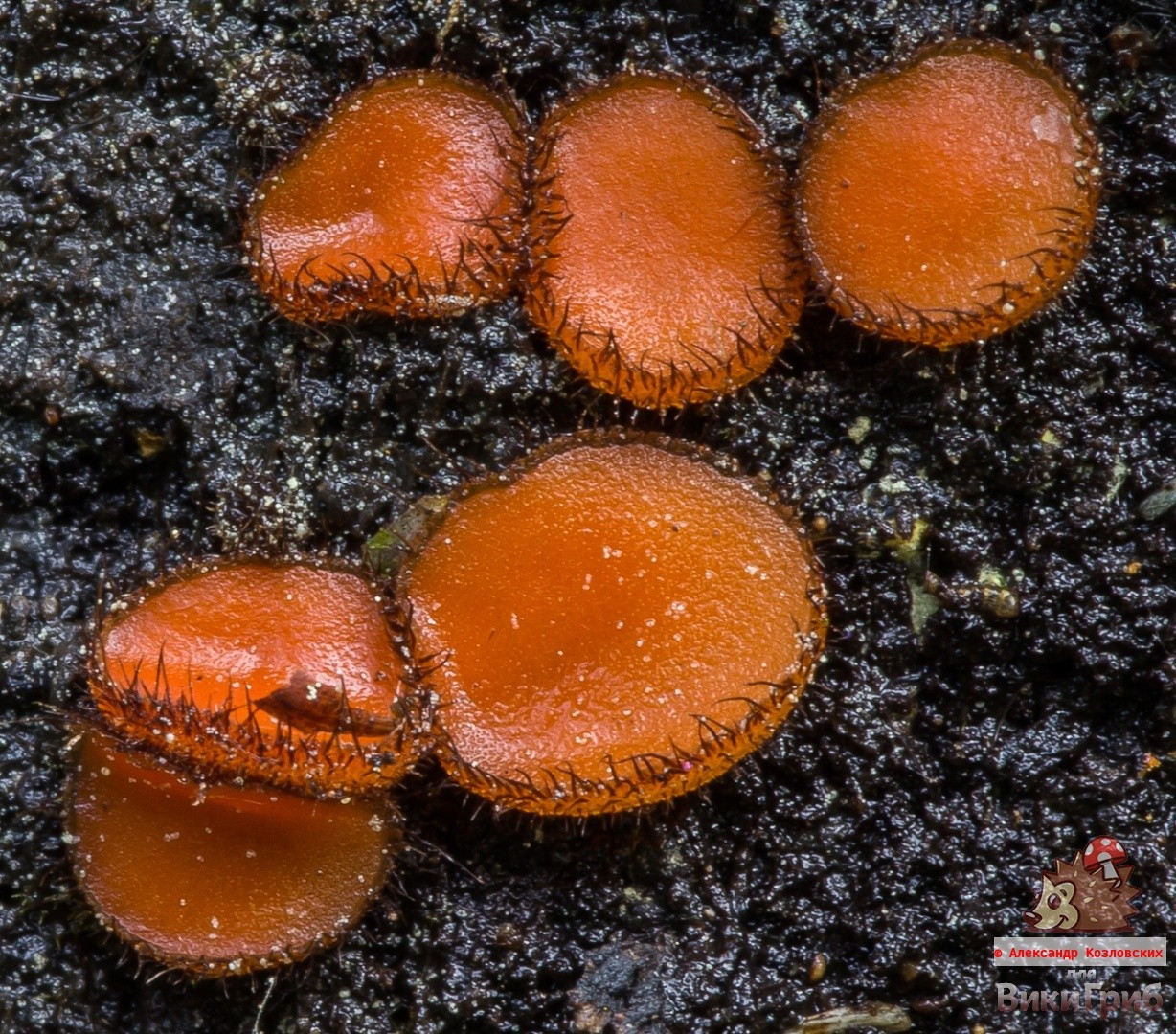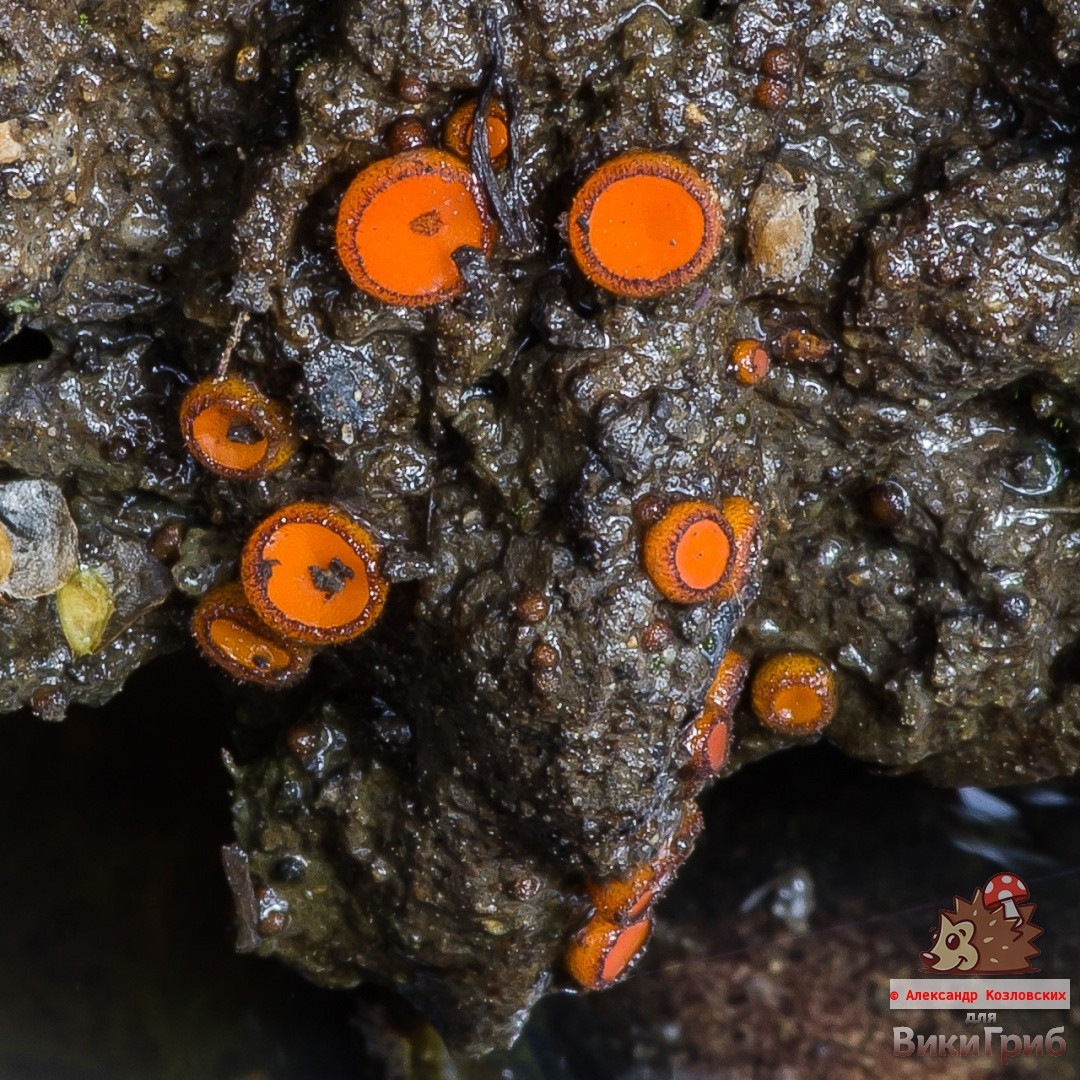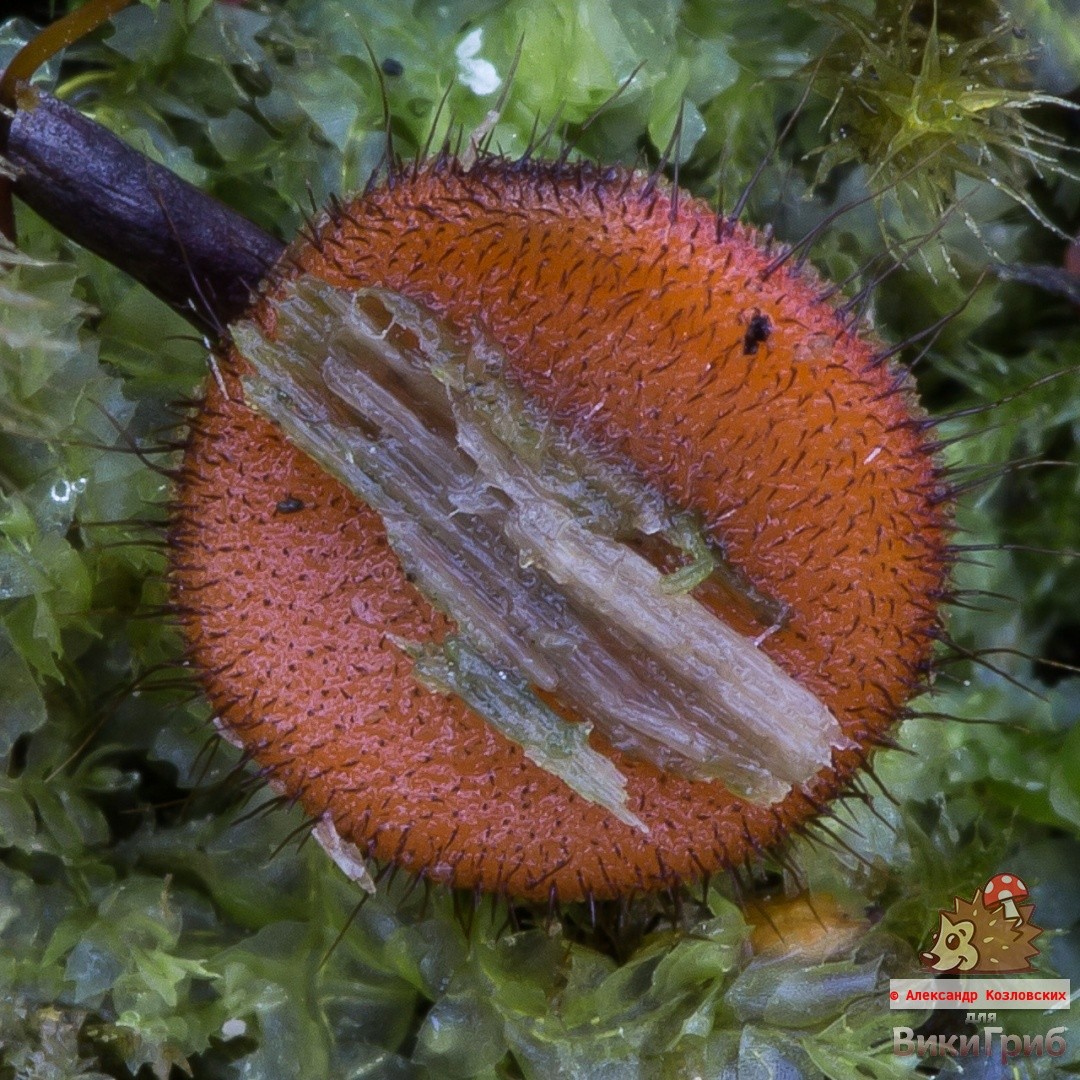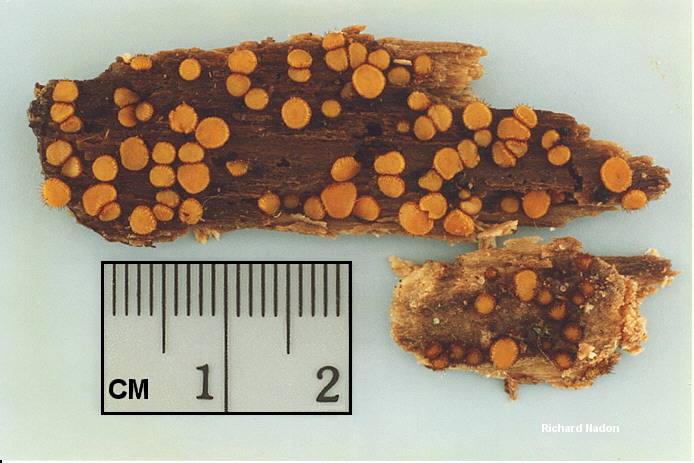Scutellinia (Scutellinia)
- ڊپارٽمينٽ: Ascomycota (Ascomycetes)
- ذيلي تقسيم: Pezizomycotina (Pezizomycotins)
- طبقو: Pezizomycetes (Pezizomycetes)
- ذيلي ڪلاس: Pezizomycetidae (Pezizomycetes)
- آرڊر: Pezizales (Pezizales)
- خاندان: Pyronemataceae (Pyronemic)
- Genus: Scutellinia (Scutellinia)
- قسم: Scutellinia (Scutellinia)
- Ciliaria What.
- Humariella J. Schröt.
- Melastiziella Svrcek
- Stereolachnea Hohn.
- Trichaleurina Rehm
- Trichaleuris Clem.
- Ciliaria What. ex Boud.

Scutellinia is a genus of fungi in the Pyronemataceae family, in the order Pezizales. There are several dozen species in the genus, more than 60 species are described in relatively detail, in total, according to various sources, about 200 are expected.
The taxon Scutellinia was created in 1887 by Jean Baptiste Émile Lambotte, who elevated the subgenus Peziza subgen., which existed since 1879, to the rank of genus.
Mushrooms with small fruiting bodies in the form of small cups or saucers, can be concave or flat, covered with fine hairs on the sides. They grow on soil, mossy rocks, wood and other organic substrates. The inner fruiting surface (with hymenophore) can be whitish, orange or various shades of red, the outer, sterile – the same color or brown, covered with a thin bristle. Setae brown to black, hard, pointed.
The fruiting body is sessile, usually without a stem (with a “root part”).
Spores are hyaline, spherical, ellipsoid or spindle-shaped with numerous droplets. The surface of the spores is finely ornamented, covered with warts or spines of various sizes.
The species are very similar in morphology, a specific species identification is possible only on the basis of microscopic details of the structure.
The edibility of Scutellinia is not seriously discussed, although there are references in the literature to the alleged edibility of some “large” species: mushrooms are too small to be considered from a gastronomic point of view. However, there is no mention of their toxicity anywhere.
Type of vine — Scutellinia scutellata (L.) Lambotte
- Scutellinia saucer
- Scutellinia thyroid
- Peziza scutellata L., 1753
- Helvella ciliata Scop., 1772
- Elvela ciliata Scop., 1772
- Peziza ciliata (Scop.) Hoffm., 1790
- Peziza scutellata Schumach., 1803
- Peziza aurantiaca Vent., 1812
- Humaria scutellata (L.) Fuckel, 1870
- Lachnea scutellata (L.) Sacc., 1879
- Humariella scutellata (L.) J. Schröt., 1893
- Patella scutellata (L.) Morgan, 1902

This type of Scutellinia is one of the largest, is considered the most common and most studied. In fact, it is likely that some of the Scutellinia identified as Scutellinia saucer are representatives of other species, since the identification was carried out on macro-features.
ميوي جو جسم S. scutellata is a shallow disc, usually 0,2 to 1 cm (maximum 1,5 cm) in diameter. The youngest specimens are almost completely spherical, then, during growth, the cups open and expand, during maturation they turn into a “saucer”, a disk.
The inner surface of the cup (the fertile spore surface known as the hymenium) is smooth, scarlet to bright orange or bright orange red to reddish brown, while the outer (sterile) surface is pale brown, brownish, or pale orange.
The outer surface is covered with dark hard bristle hairs, the longest hairs grow along the edge of the fruiting body, where they are up to 1,5 mm long. At the base, these hairs are up to 40 µm thick and taper to pointed apices. The hairs form characteristic “eyelashes” on the edge of the calyx. These cilia are visible even to the naked eye or are clearly visible through a magnifying glass.

پيئي: absent, S. scutellata – “sitting” bend.
پل: whitish in young mushrooms, then reddish or red, thin and loose, soft, watery.
بوء ۽ ذائقو: without features. Some literary sources indicate that the pulp smells like violet when kneaded.
ماڊيڪيسڪوپي
Spores (best seen in lactophenol and cotton blue) are elliptical 17–23 x 10,5–14 µm, smooth, while immature, and remain so for a long time, but when mature, markedly embossed with warts and ribs reaching to height about 1 µm; with a few drops of oil.
Paraphyses with swollen tips 6-10 microns in size.
Marginal hairs (“eyelashes”) 360-1600 x 20-50 microns, brownish in KOH, thick-walled, multi-layered, with branched bases.
It is found on all continents except Antarctica and Africa, as well as on many islands. In Europe, the northern border of the range extends to the northern coast of Iceland and 69 latitudes of the Scandinavian Peninsula.
It grows in forests of various types, in thickets and in relatively light areas, prefers rotting wood, but can appear on any plant debris or on moist soil near decayed stumps.
The fruiting period of S.scutellata is from spring to autumn. In Europe – from late spring to late autumn, in North America – in winter and spring.
All representatives of the genus Scutellinia (Scutellinia) are very similar to each other.
On closer examination, one can distinguish Scutellinia setosa: it is smaller, the color is predominantly yellow, the fruiting bodies grow mainly on a woody substrate in large, closely crowded groups.
Fruiting bodies cup-shaped, saucer-shaped or disc-shaped with age, small: 1 – 3, up to 5 mm in diameter, yellow-orange, orange, reddish-orange, with thick black “hairs” (setae) along the edge of the cup.
Grows in large clusters on damp, decaying wood.

Spores: Smooth, ellipsoid, 11–13 by 20–22 µm, containing numerous oil droplets. The asci (spore-bearing cells) are roughly cylindrical in shape, measuring 300–325 µm by 12–15 µm.
Originally described in Europe, it is also found in North and Central America where it grows on the decaying wood of deciduous trees. North American sources often give its name as “Scutellinia erinaceus, also known as Scutellinia setosa”.

Fruiting: Summer and autumn, from June to October or November in warm weather.
A bowl of shadows. This is a common European species, forming clusters of orange discs up to 1,5 cm in diameter in summer and autumn on soil or rotting wood. It closely resembles congeners such as Scutellinia olivascens and can only be reliably identified by microscopic features.
On average, S.umbrorum has a larger fruiting body than S.scutellata and larger spores, with shorter and less visible hairs.
Scutellinia olivascens. This European fungus forms clusters of orange discs up to 1,5 cm in diameter on soil or rotting wood in summer and autumn. It is very similar to the common species Scutellinia umbrorum and can only be reliably identified by microscopic features.
This species was described in 1876 by Mordecai Cooke as Peziza olivascens, but Otto Kuntze transferred it to the genus Scutellinia in 1891.
Scutellinia subhirtella. In 1971, Czech mycologist Mirko Svrček isolated it from specimens collected in the former Czechoslovakia. The fruit bodies of the fungus are yellowish-red to red, small, 2–5 mm in diameter. Spores are hyaline (translucent), ellipsoid, 18–22 by 12–14 µm in size.
Photo: Alexander, mushroomexpert.com.









